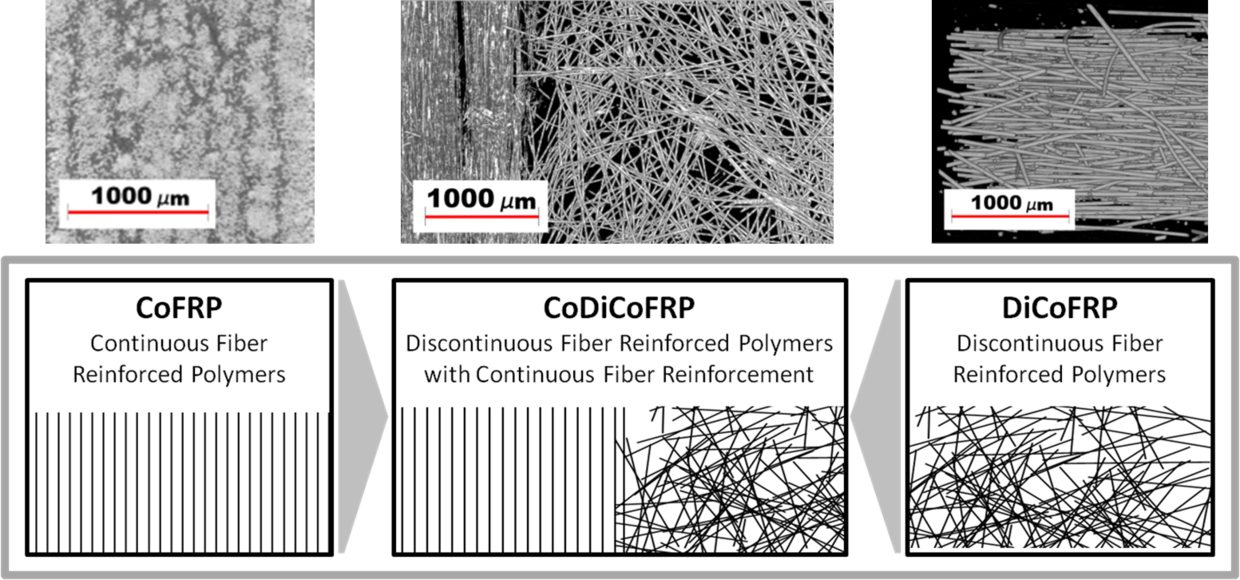Terminology of Materials

Fig. 1 Terminology of CoFRP, DiCoFRP and CoDiCoFRP
CoFRP
- The arrangement of continuous fibers are approxiamtely homogeneous
DiCoFRP
- The orientation distribution and the spatial arrangement of fibers show a significant degree of inhomogeneity and randomness
- Fiber congregations and optional filler particles may be present
- The strong spatial inhomogeneity is induced by the manufacturing process
Fiber Reinforced Thermoplastics and Thermosets
Fig. 2 Classification of fiber reinforced polymers based on average fiber length:
continuous fibers (left), long fibers (middle), short fibers (right)
Thermoplastics
- Classification of the materials is usually introduced based on the average fiber length (Fig.2)
- Separation between short fiber and long fiber reinforced composites (LFT) manufactured in compression molding is usually in the range of approximately 4 mm
Thermosets
- Description is oriented on the manufacturing process of the compound
- Bulk Molding Compounds (BMC)
- Sheet Molding Compound (SMC) - No precise generally accepted separation concerning the used fiber lengths for SMC
Notation
- Unified notation for all of the aforementioned composite types with respect to the fiber arrangement and the polymer system
- Thermoset (TS)
- Thermoplastic (TP) - Subdivided into
- CoFRTS/DiCoFRTS/CoDiCoFRTS
- CoFRTP/DiCoFRTP/CoDiCoFRTP

Fig. 3 Abbreviations for different classes of composites with specification of the polymer system
Combining the Advantages of Two Types of Reinforcements
Main advantages
- DiCoFRP
+ Bulk material flow capability
+ Significant increase in the design freedom for components
- Low load-bearing capacity
- CoFRP
+ High load-bearing capacity
- Restricted design freedom and formabililty
- CoDiCoFRP
+ Optimal combination of design options
+ High stiffness and strength
Fig. 4 Demonstrator structure manufactured of DiCoFRP with local Co fiber reinforced patches
In contrast to CoFRP-like woven or non-crimp fabrics for which established design strategies exist, which are successfully used in Co-FRP engineering applications, the design strategies for CoDiCoFRP are to be developed in order to use CoDiCoFRP in structural applications.
